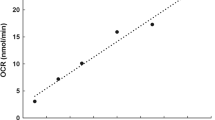Abstract
Food contamination with respect to microsporidiosis in humans (associated with acquired immunodeficiency syndrome) and in marine fish farming deserves particular attention. For the first time, a study on the longevity and resistance to both heat and freezing of the spores of a vertebrate microsporidian, Glugea stephani, parasitizing a commercial flatfish was carried out. As judged on the basis of determinations of the extrusion rate, the resistance of the spores to temperature stress was remarkable. The extrusion rate, which can be directly related to infectivity, was always lower than the viability (membrane integrity). It should be pointed out that neither heat (60° C for 30 min) nor freezing (−19° C for 24 h) caused a complete reduction in the extrusion rate or viability. Consequently, the ingestion of poorly cooked or raw fish (even if previously frozen) represents a danger for aquaculture and, probably, for immunodepressed patients.
Similar content being viewed by others
Author information
Authors and Affiliations
Additional information
Received: 25 May 1995 / Accepted: 21 August 1995
Rights and permissions
About this article
Cite this article
Amigó, J., Gracia, MP., Rius, M. et al. Longevity and effects of temperature on the viability and polar-tube extrusion of spores of Glugea stephani, a microsporidian parasite of commercial flatfish. Parasitol Res 82, 211–214 (1996). https://doi.org/10.1007/s004360050097
Issue Date:
DOI: https://doi.org/10.1007/s004360050097




